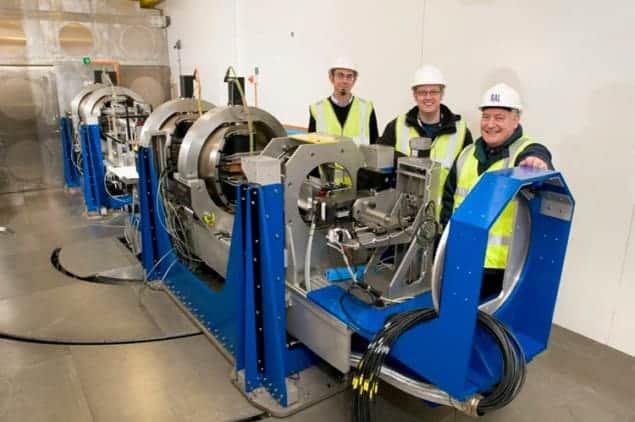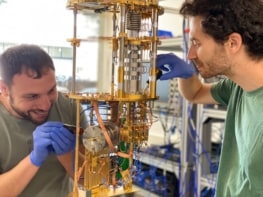
An optical effect first proposed by Isaac Newton has been observed in matter for the first time. The discovery is yet another affirmation of wave–particle duality – one of the cornerstones of quantum mechanics. The breakthrough is also the first published science to emerge from a £200m neutron source recently opened in the UK.
Newton predicted in the 17th century that a beam of light reflected at a glass-vacuum surface should undergo a minuscule lateral shift. He was arguing that wavefronts, having reached the vacuum, should “slide” a short distance along the interface before re-emerging and reflecting back into the glass. Given the tiny scale of this effect, however, it was not until 1947 that it was first observed experimentally by the physicists F Goos and H Hänchen at the State Physical Institute in Hamburg, Germany.
Case closed? Well not quite because, as all physicists are taught in high school, the distinction between waves and particles is not as clear-cut as common sense might suggest. Due to the quantized nature of energy, light can sometimes behave as if it were composed of particles, and particles can behave as if they were waves. Now, a group of researchers led by Rob Dalgliesh and Sean Langridge at the ISIS facility and Victor de Haan from the Delft University of Technology (Netherlands) have finally completed the picture by demonstrating the so-called Goos-Hänchen effect with neutrons.
Altered polarization
The researchers exploit the fact that a neutron possesses a magnetic moment that can be represented by a wavefunction known as a “spinor” comprising both up-spin and down-spin components. Theorists have calculated that the Goos-Hänchen shift should affect the up and down wave functions to differing extents, meaning that the overall polarization of a beam of neutrons should be altered by the act of it reflecting in a mirror. The outcome is that during reflection the up and down spin states should be split in space and time.
Dalgliesh and Langridge, working with their colleagues in the Netherlands, have designed an instrument capable of detecting subtle differences in polarization over a tiny area. They use this instrument, named “Offspec”, to record a spatial “splitting” of the neutron wavefunctions of up to 100 nm, which also corresponds to a time delay of the order 0.1 µs. The results were obtained at the second target station at the ISIS neutron source, which began its science operations last August, providing researchers with access to seven new state-of-the-art instruments.
Langridge tells physicsworld.com that the new facility has enabled a “step change” in the applicability of neutron scattering to nanoscience. “There are many exciting projects right across the scientific and engineering disciplines that will benefit from the improved capabilities and resolution”. What is more, he believes that the data from this latest research highlights the sensitivity of the neutron technique and may be technologically relevant to the improvement of neutron waveguides and, looking further, to next generation electronics.
This research is published in Physical Review Letters.



